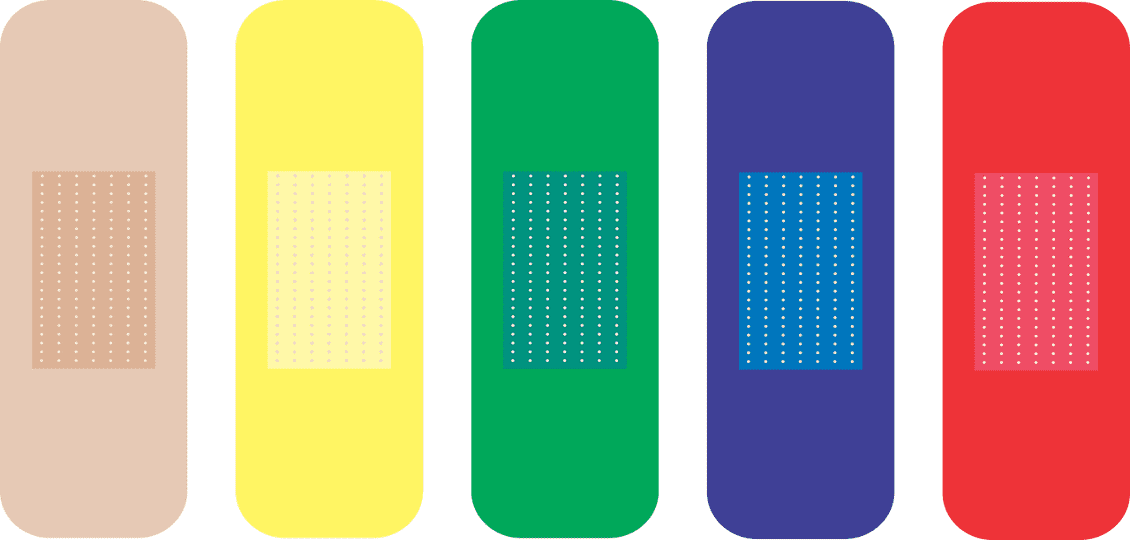By Stacey Barr
We all want to say we have a high-performance culture. But if you’re relying on any of these bandaids, you’re not going to get one.
Recently, I had a dream that the top of my left index finger was almost completely cut off. A big disgusting, I know. But what was weird is that I was trying to hold it on with a bandaid. And it wasn’t working. The top of the finger kept falling off. No matter how many bandaids I wrapped around the finger, the fingertip just wouldn’t stay on.
(If you’re dry-retching about now, I hope you do again as you continue reading. It might be motivation do to do something about it.)
Performance systems in organisations are like chopped-off fingertips, too. They need the right kind of attention to get fixed up. Unlike chopped-off fingers, every single organisation has a performance system.
Organisations tend to use bandaids, though, to fix the performance culture and performance measurement and management systems:
- Software bandaids: data warehouses, business intelligence, analytics apps, dashboards and scorecards, big data.
- Method bandaids: brainstorming, SMART, strategy maps, KPI libraries, benchmarking reports, externally imposed regulatory frameworks.
- Capability bandaids: the cheapest KPI training courses (that don’t teach how), expectations of getting it right first time, paying consultants to do it for you.
The bandaids don’t work (no matter how well we post-rationalise our decisions to use them – which humans naturally do so well). Rather, we all need to make a conscious and deliberate decision about the right kind of attention to create a performance culture, and measure and manage performance.Organisational performance is also a lot more complex than an injured finger. It’s going to take longer to put all the things in place that will make it work. These things are:
- Strong evidence-based leadership, because the rest of the organisation follows the leaders’ actions and not their words. It takes time for leaders to embrace and become very practiced at evidence-based leadership.
- The right skills to measure performance, because it doesn’t come naturally and most people have never experienced it as meaningful and engaging. It takes time to get enough people with the right skills.
- Dovetailing good measurement practice into strategic planning, review and execution, because these processes are notoriously void of sound measurement guidance.
Wrapping bandaids around your organisation’s performance systems is not only futile, but it’s not dignifying for the people trying to make it work. Bandaids like those above erode and weaken the performance culture. They can’t ever strengthen it.But when we take the right approach, which is technically proven and dignifying for everyone involved, the journey is longer but good results come sooner:
- More people stop hiding performance problems to make the KPIs look good.
- More people get excited about being able to make real performance improvements a reality.
- Better improvements are implemented, and produce tangible returns like lowering costs, improving customer experiences, and reducing wasted time and effort.
- More people see the above three things happening, and they want to have the same experience. The ripples radiate outward.
A high-performance culture, and the systems that facilitate it, need to build in iterations, that respect the rate at which people can open their minds to new ideas, learn new ways of doing things, practice them to get proficiency, and embed them into their “real work” as new habits.Stop wasting money on bandaids. Do what’s really needed, and do it right.
Organisational performance is also a lot more complex than an injured finger. Bandaid approaches don’t work.
DISCUSSION:
How long has your organisation been trying to create a high-performance culture? Are you there yet? How far have you still to go?
About
Stacey Barr is a specialist in organisational performance measurement and creator of PuMP, the refreshingly practical, step-by-step performance measurement methodology designed to overcome people’s biggest struggles with KPIs and measures. Learn about the bad habits that cause these struggles, and how to stop them, by taking Stacey’s free online course “The 10 Secrets to KPI Success” at http://www.staceybarr.com/the10secretstokpisuccess.









































